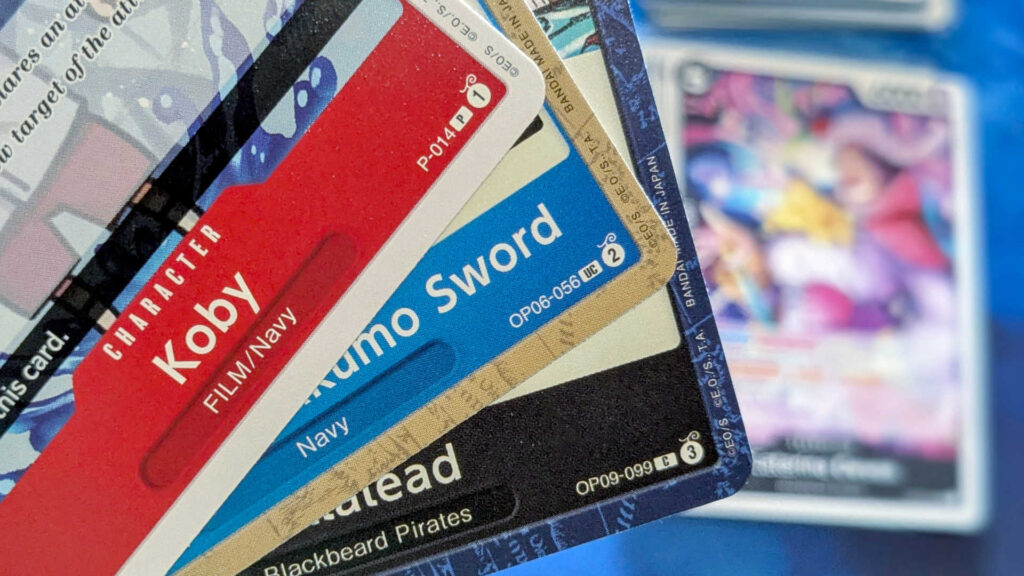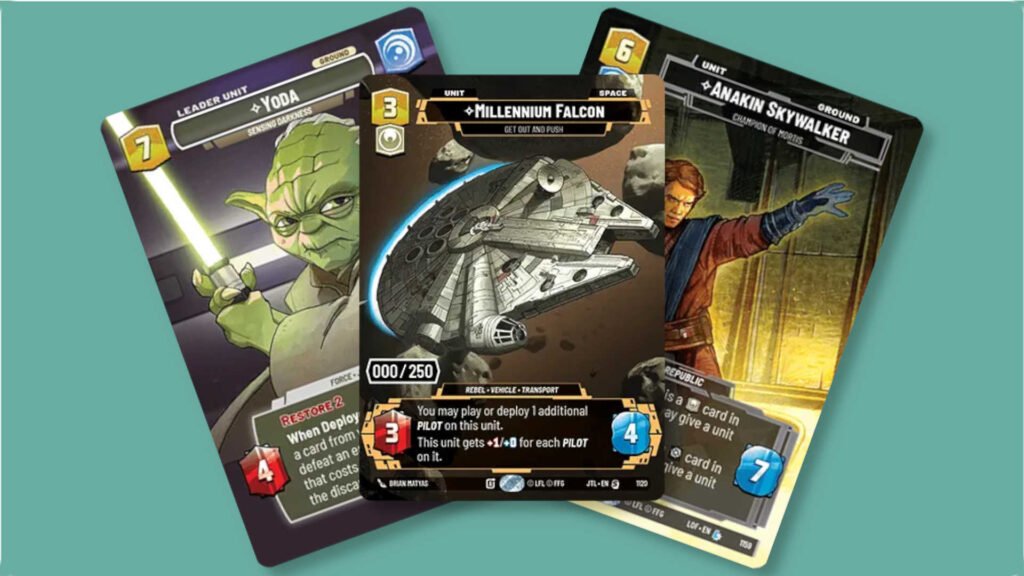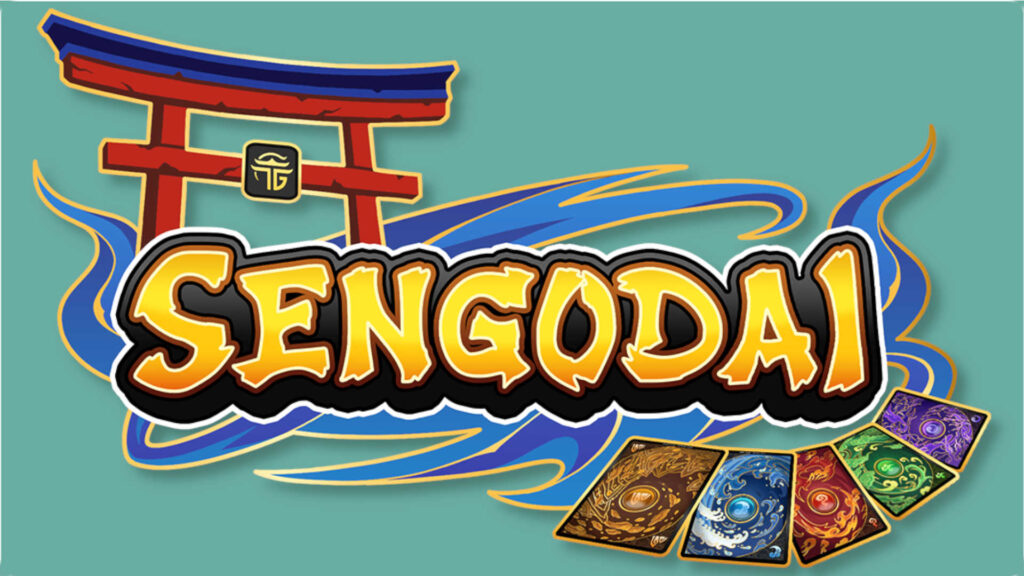The One Piece Card Game has, in just a few short years, quietly asserted itself on tabletops the world over. Though it may not have the more obvious mainstream success of other new Trading Card Games (or TCGs), such as Disney Lorcana or Star Wars Unlimited, the One Piece Card Game has definitely found a dedicated and sizeable player base. Thanks in part to it being based on a long running, perennially popular manga/anime series, not to mention stunning card art and accessible (yet deep) gameplay, the One Piece Card Game definitely feels like it’s here to stay.
Yet there’s one element of the game’s cards that has confused its fans, as there’s no explanation for it in the rules, and information on it seems very thin on the ground, even from the game’s publisher, Bandai. So let’s take a closer look at the One Piece Card Game’s Devil Fruit symbol, and find out what it means.
Table of Contents
ToggleWhere Is the One Piece Card Game‘s Devil Fruit Symbol on Each Card?
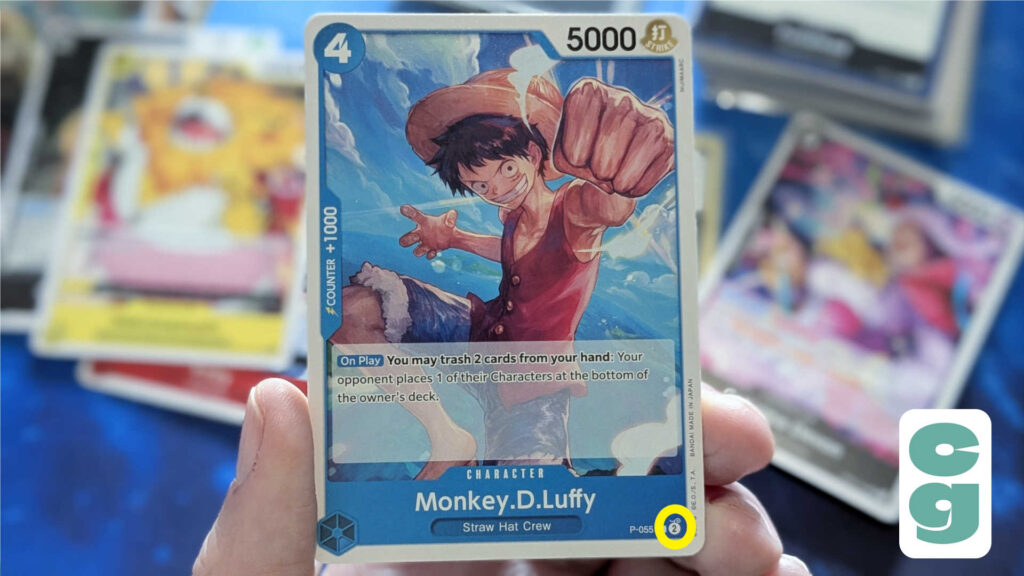
Just about all elements of a card in the One Piece Card Game have an obvious purpose; on Stage and Event cards, you’ll see the DON!! cost in the top left, with abilities, keywords and types in the box at the bottom of the card. There’s also the card’s color in its frame and title. Character cards have these elements too, and some also have a counter value on the left side. All cards feature, below the name of the card, their abilities, keywords, and type (such as Navy or Straw Hat Crew). The bottom left of the card also has a hexagon which demonstrates the card’s color further, which makes the color clearer for players with colorblindness or other visual difficulties. On the bottom right of the card is the card’s set code and number, as well as its rarity classification.
To the right of those details is a Devil Fruit symbol with a number (which you can see circled in yellow on the Monkey D. Luffy card above), and it’s this element of the card which has players stumped. What is it?
What Does the Devil Fruit Symbol Mean on One Piece Cards?
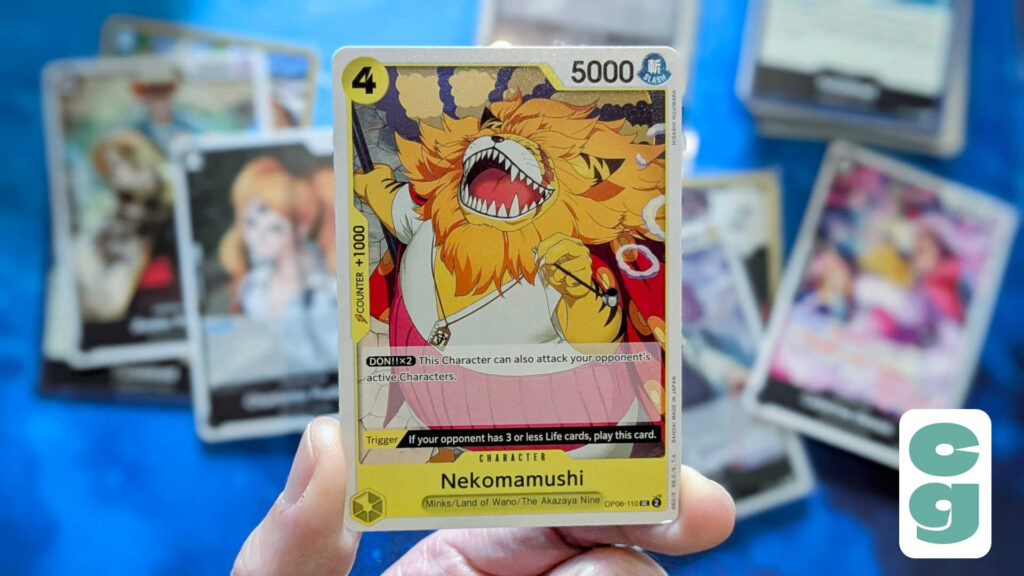
The Devil Fruits in One Piece bestow superhuman powers upon anyone who consumes them, and there are types in the saga’s world. The Devil Fruit which One Piece protagonist Monkey D. Luffy eats is a Gum-Gum Fruit, and it’s what gives him his rubber-like powers.
It’s the silhouette of a Gum-Gum Fruit that can be seen on One Piece cards, and these fruits always have a number within them; at present, this can be a 1, 2, or a 3. The number itself represents the “block” which any given card is from, and though it currently has no use, the intended use is to make it easier to remove cards from standard rotation.
What that means, if you’re not familiar with the concept of cards being “rotated” from organized play, is that older sets and cards may not remain legal to play in tournaments forever. Instead, it’ll often get to the stage, with any trading card game, where certain sets will be removed entirely from legality (or rotated out), meaning that they cannot be used in present or future tournaments.
It may also be the case that certain cards or card types may be banned from tournament play. For example, we’ve seen a very high profile case of this with the Boba Fett Leader card from Star Wars Unlimited recently, and it happens more than you may expect in games such as Magic: The Gathering and Flesh and Blood. Having the numbered Devil Fruit symbol would make it easier for players and organized play officials to identify any cards affected by such a ruling.
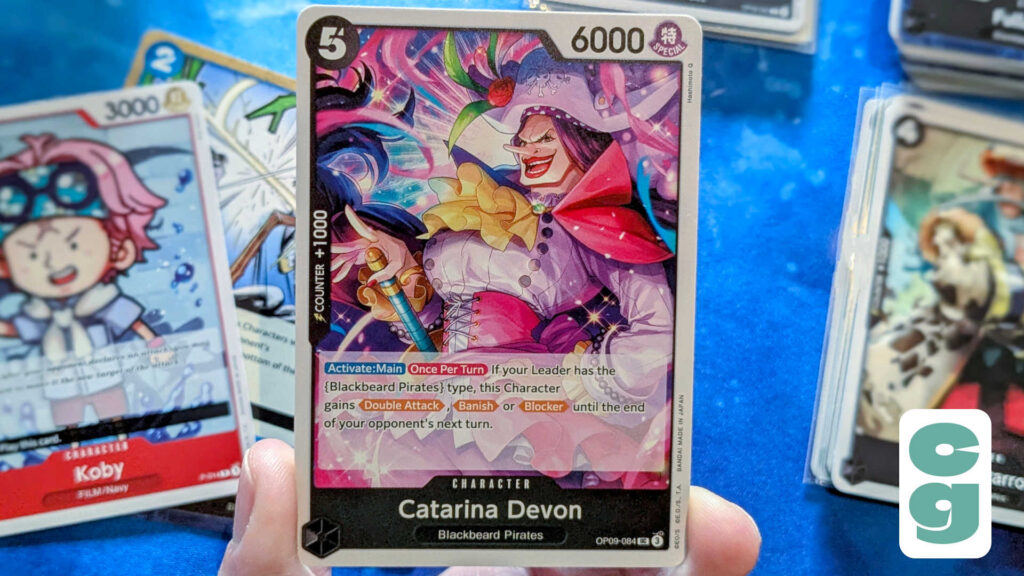
So the short answer is: the numbered Devil Fruit symbol doesn’t mean anything yet, but it’s there to future-proof the cards, in preparation for any changes to the One Piece Card Game going forward.
Want to know more about the One Piece Card Game? Take a look at our complete guide which covers how to play the One Piece Card Game, or our explanation of the different types of cards you can find in One Piece Card Game booster packs.


